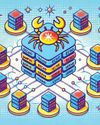
In the fast-paced and ever-evolving world of software development, two methodologies have emerged as game changers, empowering teams to deliver high quality products efficiently and swiftly. DevOps and Agile are two distinct approaches that have gained significant popularity in recent years, each with its own set of principles and advantages. While they share some similarities, they address different aspects of the development process and serve unique purposes.
In this article, we will delve into the world of DevOps and Agile, highlighting their key differences, core principles, and how they can complement each other. By understanding these methodologies, you’ll be better equipped to make informed decisions for your team and project, optimising your software development processes and achieving remarkable results. So, buckle up, as we embark on this journey of discovery into the realms of DevOps vs Agile.
Knowing Agile
Agile is the go-to approach for iterative and incremental development. It’s all about collaboration, customer feedback, and adaptability to changes. Agile teams work in short development cycles called ‘sprints’, which usually last around two to four weeks. And Scrum, one of the most popular Agile frameworks, is all about that!
Here are Agile’s core values, as laid out in the Agile Manifesto:
People and interactions are more vital than processes and tools.
Working software beats comprehensive documentation any day.
Customer collaboration trumps contract negotiation.
Being able to adapt to change is way better than following a rigid plan.
Knowing DevOps
هذه القصة مأخوذة من طبعة September 2023 من Open Source For You.
ابدأ النسخة التجريبية المجانية من Magzter GOLD لمدة 7 أيام للوصول إلى آلاف القصص المتميزة المنسقة وأكثر من 9,000 مجلة وصحيفة.
بالفعل مشترك ? تسجيل الدخول
هذه القصة مأخوذة من طبعة September 2023 من Open Source For You.
ابدأ النسخة التجريبية المجانية من Magzter GOLD لمدة 7 أيام للوصول إلى آلاف القصص المتميزة المنسقة وأكثر من 9,000 مجلة وصحيفة.
بالفعل مشترك? تسجيل الدخول

Helgrind: Detecting Synchronisation Issues in Multithreaded Programs
Let's explore how Helgrind can be used to detect and debug multithreading issues with the help of a multithreaded C program.

The Perfect Process of Booting a PC
Booting a PC seems as simple as eating a cake. But are you aware of all that goes on behind-the-scenes to bake a delicious cake or seamlessly boot a PC?

Exploring eBPF and its Integration with Kubernetes
eBPF, a game-changing technology that extends the capabilities of the Linux kernel, offers significant advantages for Kubernetes networking. It also greatly improves Kubernetes observability by capturing detailed telemetry data directly from the kernel. Read on to find out how its integration with Kubernetes has immense benefits.

Deploying Generative AI LLMs on Docker
Built on massive datasets, large language models or LLMS are closely associated with generative Al. Integrating these models with Docker has quite a few advantages.

Containerisation: The Cornerstone of Multi-Cloud and Hybrid Cloud Success
Open source containerisation software provides the flexibility, cost-effectiveness, and community support needed to build and manage complex multi-cloud and hybrid cloud environments. By leveraging this software, businesses can unlock the full potential of multicloud and hybrid cloud architectures while minimising vendor lock-in risks.

From Virtual Machines to Docker Containers: The Evolution of Software Development
Containerisation and Kubernetes have eased software development, making it faster and better. Let's see where these are headed, looking at trends that are making life easier for developers.

India's Leap in Supercomputing: Innovating for Tomorrow
As India strides towards self-sufficiency in supercomputing, embracing this evolution isn't just an option-it is pivotal for global competitiveness and technological leadership.

SageMath: A Quick Introduction to Cybersecurity
In the previous articles in this SageMath series, we delved into graph theory and explored its applications using SageMath. In this seventh article in the series, it is time to shift our focus to another crucial subfield of computer science: cybersecurity and cryptography.

Efficient Prompt Engineering: Getting the Right Answers
OpenAl's GPT-3 and GPT-4 are powerful tools that can generate human-like text, answer questions, and provide insights. However, the quality of these outputs depends heavily on how you frame the input, or prompt. Efficient prompt engineering ensures you get the right answers by designing inputs that guide the AI towards relevant, clear, and useful responses. Let's find out how to craft effective prompts with examples.

Analysing Linus Torvald's Critique of Docker
This article looks at Docker's security flaws, particularly its shared-kernel model, and contrasts it with traditional VMs for better isolation. It discusses Linus Torvalds' concerns, explores mitigation techniques, and proposes a roadmap for building a more secure containerisation platform using hardware-assisted virtualisation, true isolation, and a robust orchestration layer.